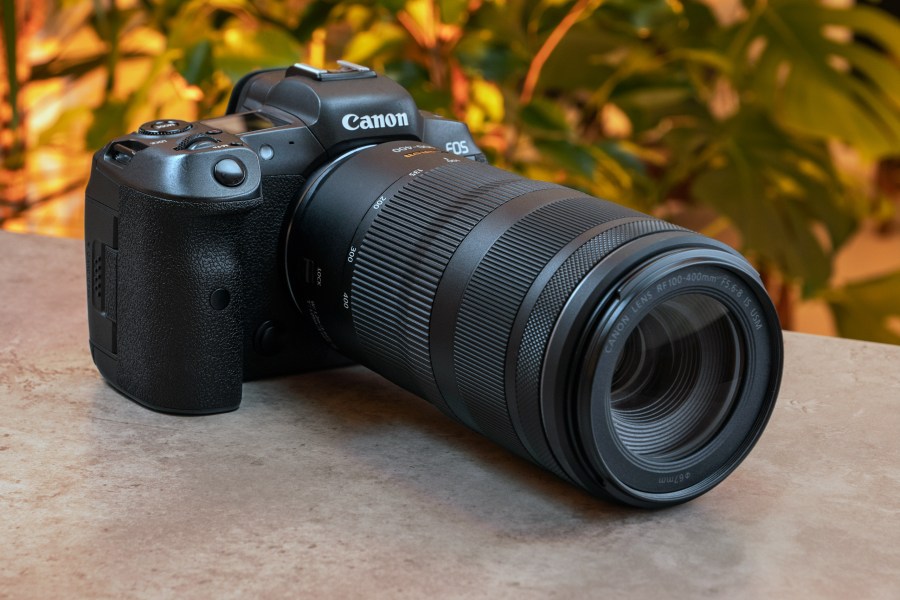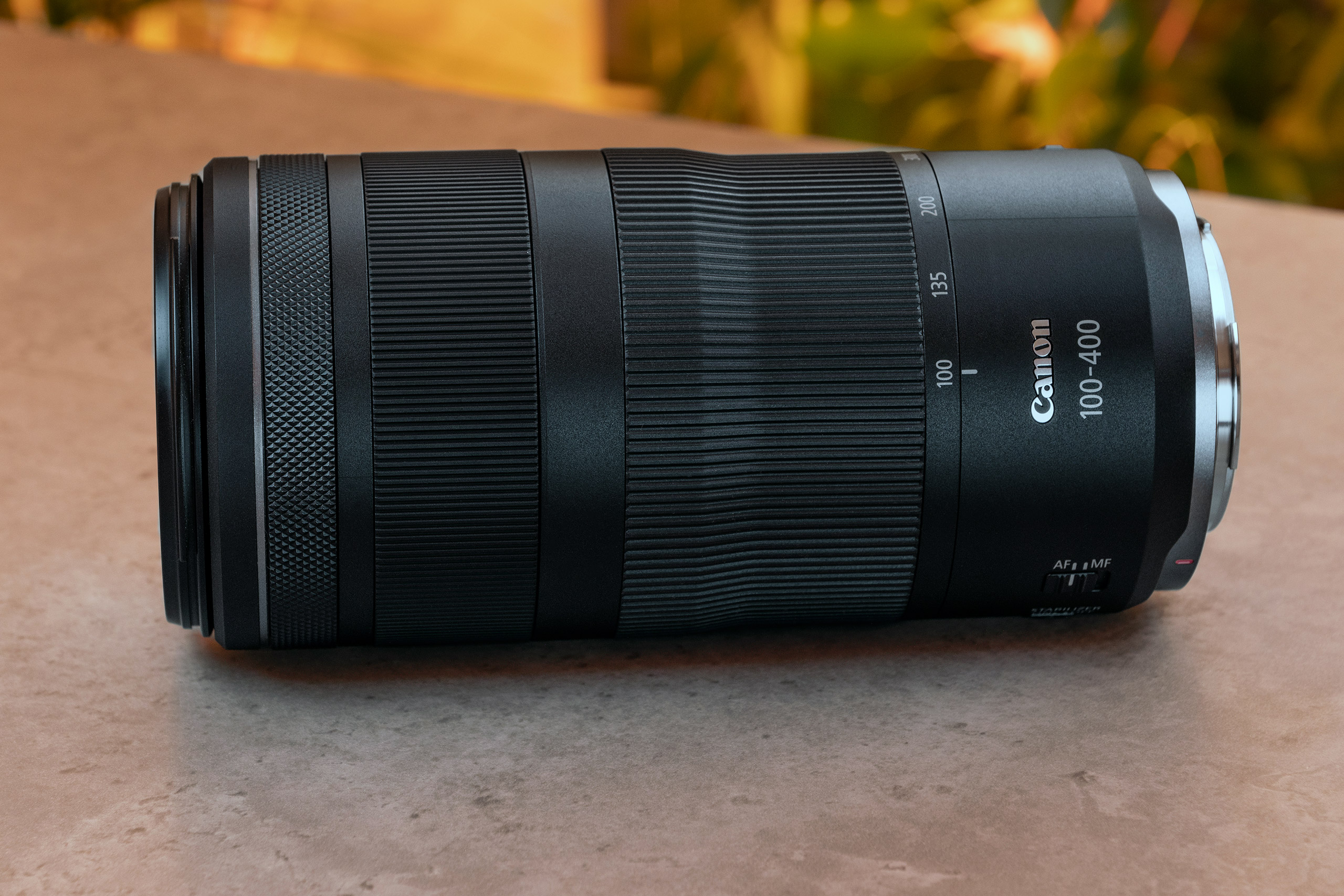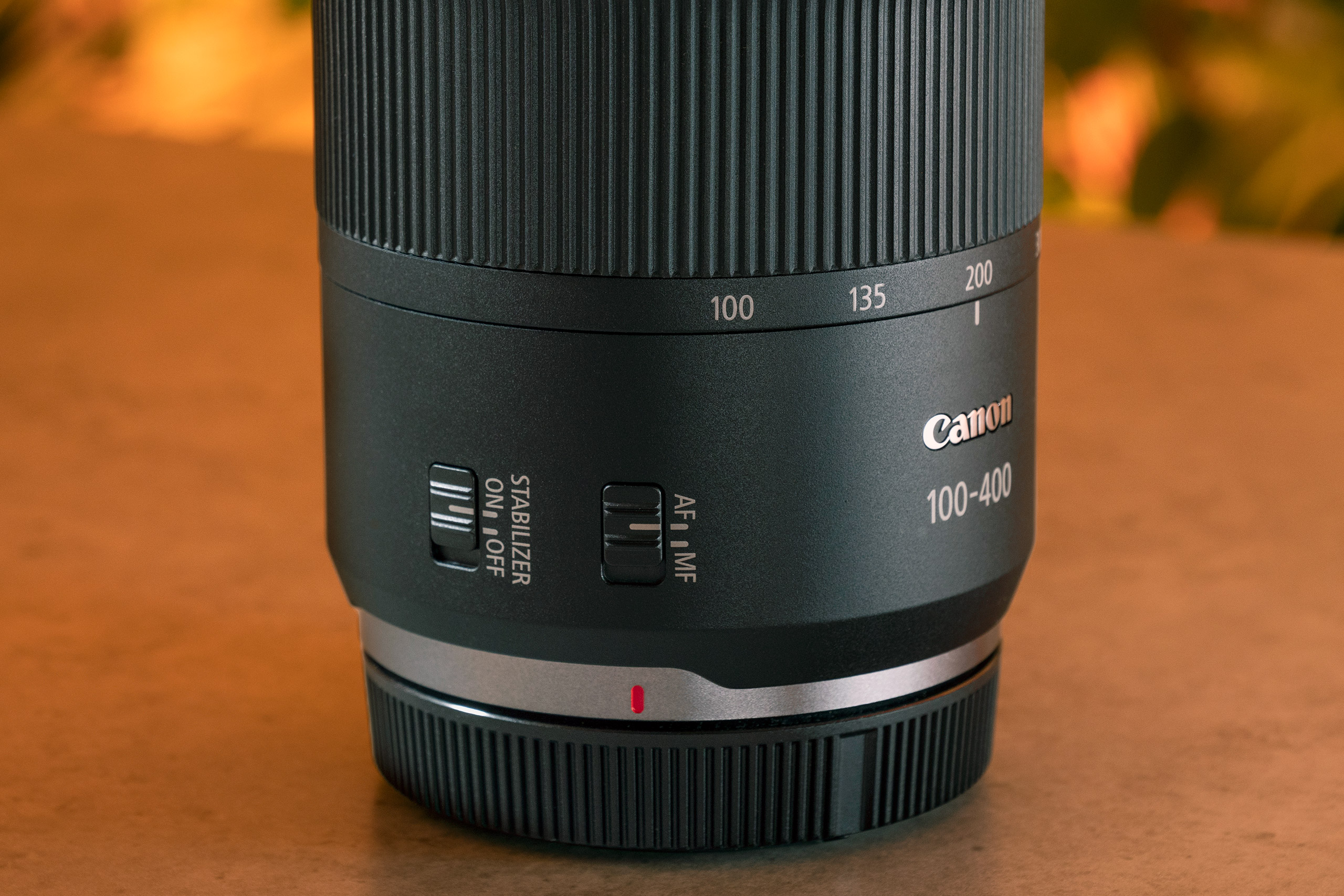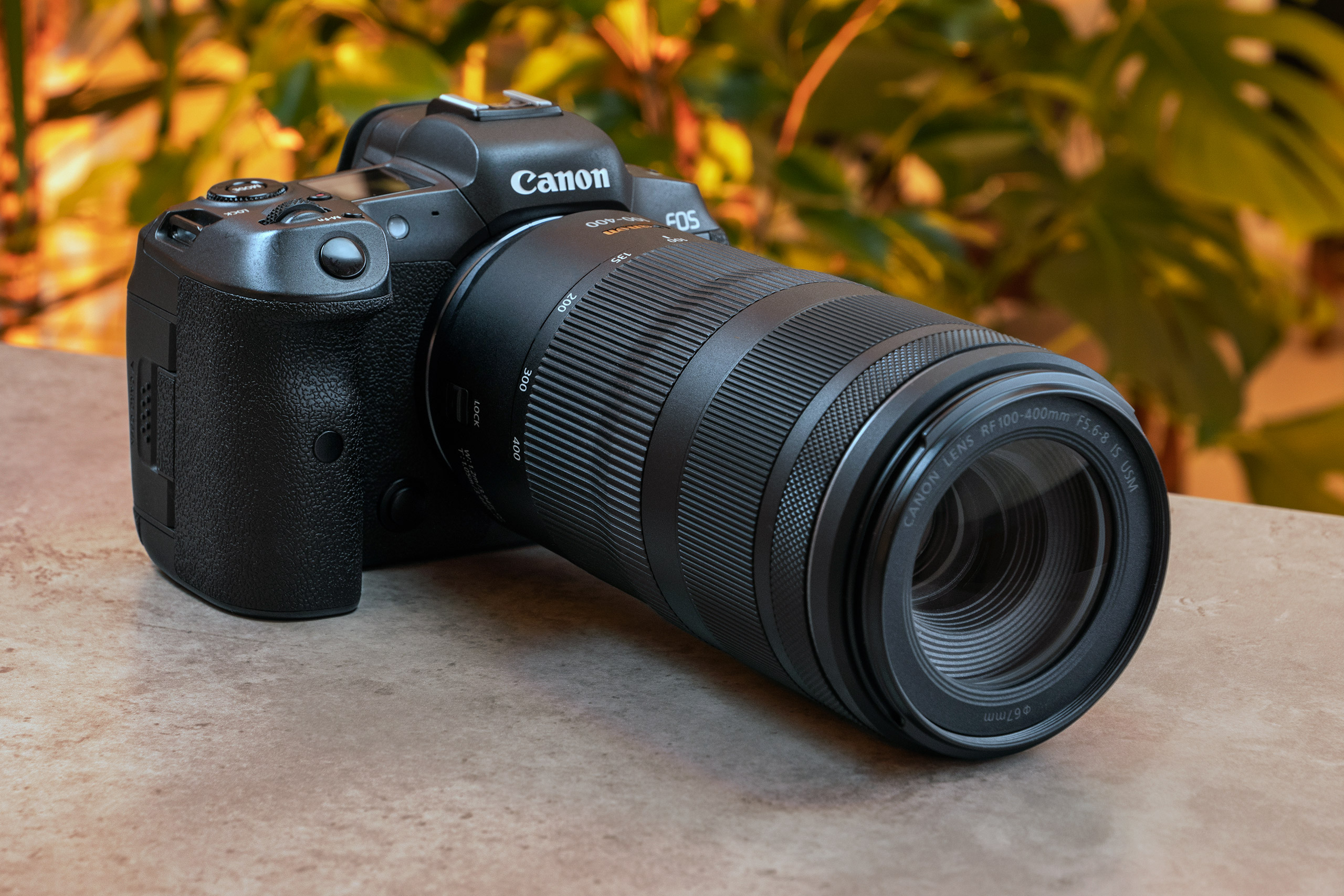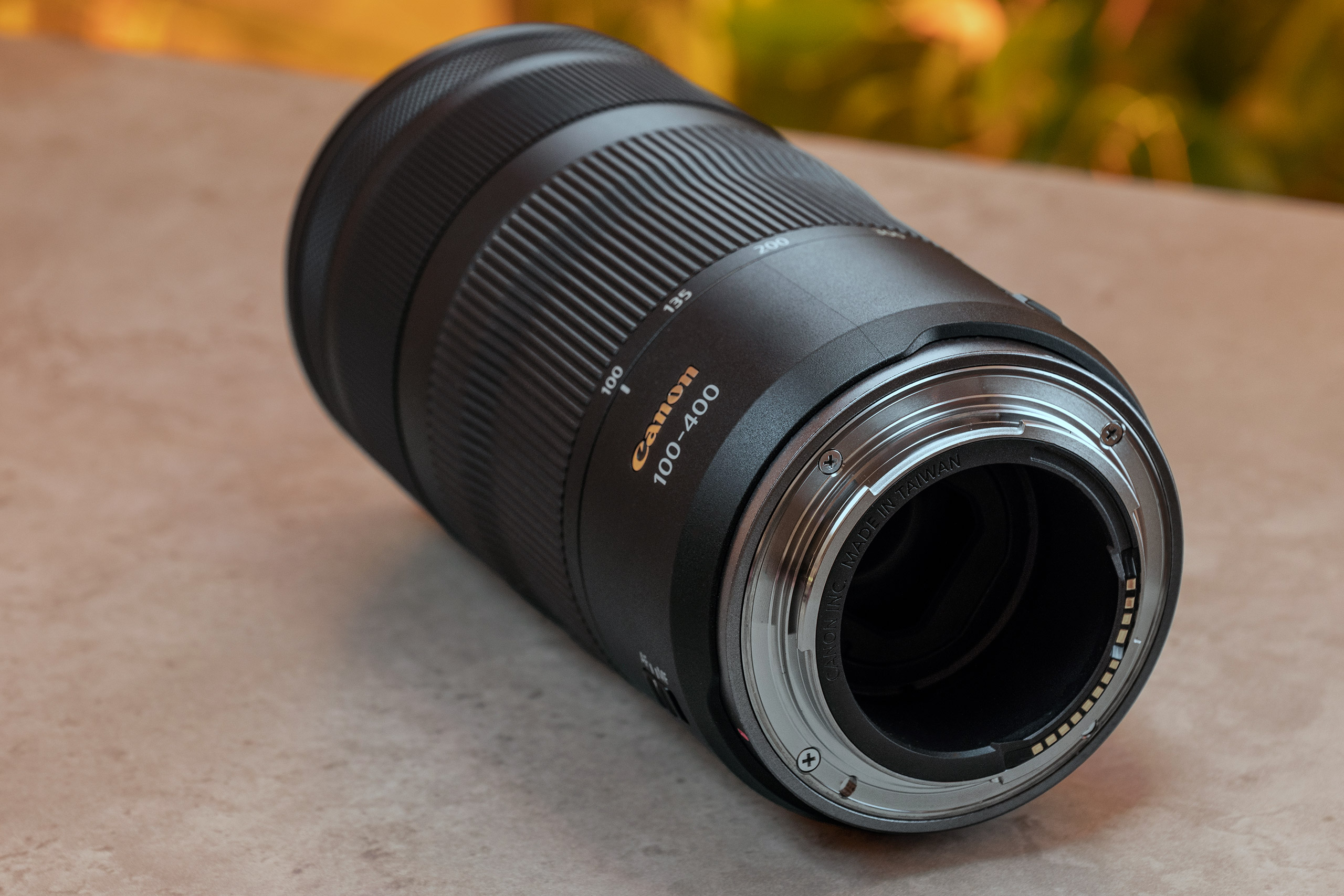The image-stabilised 100-400mm zoom lens has been a key feature of the Canon lens line-up since the late 1990s, and has played a major role in the life of the brand’s sport, wildlife and fashion photographers, as well as in that of the general practitioner. These lenses have always been good too, and from the first incarnation for the EOS EF L series have offered a maximum aperture of f/4.5-5.6 and USM focus pulling. I have no idea how many the company has sold in the last thirty years, but I would wager the £2000+ price tag it has been in the top ten of Canon EF L series sales pretty much all that time.
With the change to the mirrorless R series a new solution is required, and Canon approximately addressed that early on with the RF 100-500mm f/4.5-71 L IS USM which retails at around £3000 – about £1000 more than the EF version, though with 100mm of extra reach.
To satisfy those with more limited budgets the company has launched a lower-cost 100-400mm with a smaller maximum aperture and a plastic barrel with this RF 100-400mm f/5.6-8 IS USM. It isn’t quite as fancy as the big boy L lens, but at a quarter of the price it makes itself accessible to a much wider audience – which is usually a very good thing.
Canon RF 100-400mm F5.6-8 IS USM Features
The Canon EOS RF 100-400mm f/5.6-8 IS USM is a lens designed to cover full frame sensors in the Canon R mirrorless camera series. The internal design uses 12 elements in 9 groups, and includes one UD element and an aspherical element made using the PMo plastic moulding process. The PMo element plays a key role in keeping down both the size and the cost of the lens.
On paper at least this 100-400mm lens offers an extra 0.5EV of stabilisation over the much more expensive 100-500mm L lens, bring the effect to an impressive 5.5EV. This of course combines with in-camera sensor-based stabilisation for a further leg-up to 6EV with the Canon EOS R5 I used for this test.
We are told the iris uses 9 blades to keep out-of-focus highlights nicely rounded and to produce smooth focus transitions. The variable maximum aperture remains at f/5.6 until the zoom ring reaches about the 120mm mark where it shifts to f/6.3. We don’t have to hit f/8 unless we want to until we ask for a focal length of around 275mm – which I think is quite generous.
Remarkably the lens is compatible with Canon’s 1.4x and 2x tele-converters that were introduced with the 100-500mm L lens, though I’m not sure how many takers there will be as the £719 2x model actually costs more than the lens itself, and the 1.4x isn’t far off at £559.
Canon RF 100-400mm F5.6-8 IS USM Build and Handling
Like the RF 16mm f/2.8 STM lens that was launched at the same time, one of the main excitements of this RF 100-400mm f/5.6-8 is its price, followed by its size and its weight. In fact, it’s by far the smallest and lightest 100-400mm zoom on the market. At 635g it is less than half the weight of both the EF L 100-400mm and the RF 100-500mm, and the barrel is slimmer and the extension at the greatest focal length shorter by about 30mm.
It is all over smaller, lighter and cheaper, but of course without its own tripod mount, and it has fewer external controls. We have a zoom lock, AF/MF switch and a simple stabiliser on/off control without the modes the L series version offers, and there’s no a focus range limiter. Switching the IS on and off makes it very clear how hard the system is working to maintain a steady view in the viewfinder – it is very effective indeed.
The barrel features three rings – one for focusing, one for focal length adjustment and a third at the extreme forward end that acts as a function ring that can be customised to control one of 17 features, such as aperture or white balance.
In use the lens is very comfortable and balances nicely with the R5 body. Its moderate weight makes it easy to hold still even at the long end, and it’s no bother to carry around all day – a point that will be important to very many users. Its plastic finish is also a God-send on a winter’s day, as it doesn’t get nearly as cold as a metal barrel.
In all using this lens makes a very nice experience.
Autofocus
We have Nano-USM driving the focusing in this lens, which is supposed to make it quiet, fast and smooth. I can report it is on the better side of reasonable in each of those tasks. The focus is quiet, though not quite silent enough if you have a microphone in the hotshoe. It is definitely smooth and it is definitely pretty fast. I suspect this system doesn’t quite get the most from the R5’s AF capabilities and that top speeds are slightly inhibited, but it remains more than good enough for most purposes.
The hit-rate for a series of birds-in-flight images is pretty good, but still a significant number are near-misses. The camera is able to acquire focus and identify the subject very quickly, but when it comes to getting the shot something held the focus accuracy back a little.
Generally, though the autofocus in this lens is good and will keep most photographers happy.
Canon RF 100-400mm F5.6-8 IS USM Image quality
When a budget lens costs a quarter of the price of the premium version we should know from the off that we aren’t going to get premium quality. However, I have been pretty impressed with the images this 100-400mm produces and you’ll get more line-pairs per £ than you would with the L version in either EF and RF mounts.
For best quality shoot in RAW as the JPEGs the R5 produces are noticeably softer, and consider whether you are happy to allow the auto corrections of vignetting, chromatic aberration and curvilinear distortion to go ahead either in-camera or in your software. Pin cushion distortion (where the edges of the image pinch inwards) is significant when straight lines are in the frame, with the effect stronger at the long end of the zoom range. If you are a portrait photographer your subject may well thank you for this as it makes faces and figures thinner and taller, while the prescribed correction in-camera and in Photoshop seems a little too much the other way. Switching the lens profile on and off makes the degree of distortion and vignetting quite clear without me having to do a specific test for the two, which is quite useful. For technical subjects both will need correction, but with natural scenes the truth is neither will be especially noticeable. Canon has got the balance between optical and software correction about right here, so that we don’t suffer if we choose not to implement the automatic adjustments.
Sharpness is good, even when the lens is used wide open. Inevitably it improves as we stop down, but it is pretty important when your maximum aperture is f/8 that the lens can perform to a decent standard at that setting. Even with the good IS system closing the aperture of a 400mm lens to f/11 and f/16 in all but the brightest conditions will mean either long shutter speeds or higher ISO settings.
Canon RF 100-400mm F5.6-8 IS USM Verdict
When producing a lower cost lens a lot of difficult compromises need to be made, and in many ways how those compromises are chosen is more critical than those when the budget is much higher. One wrong move and the resultant performance can mean even a low price tag doesn’t make the lens worth owning. In this case though Canon has found a neat way through and has produced a lens with such moderate compromises it becomes very good value for money instead of just cheap. The limited maximum aperture is countered by the R cameras’ good noise performance and that the widest apertures are still very usable, and the optical imperfections are slight enough we can either choose to live with them or fix them in software with hardly noticeable consequences.
If you are a Canon EOS R system user and don’t want to spend the thousands required for the L series 100-500mm f/4.5-7.1, and you are prepared to accept a bit of give and take, this RF 100-400mm f/5.6-8 IS USM will make you very happy indeed.


